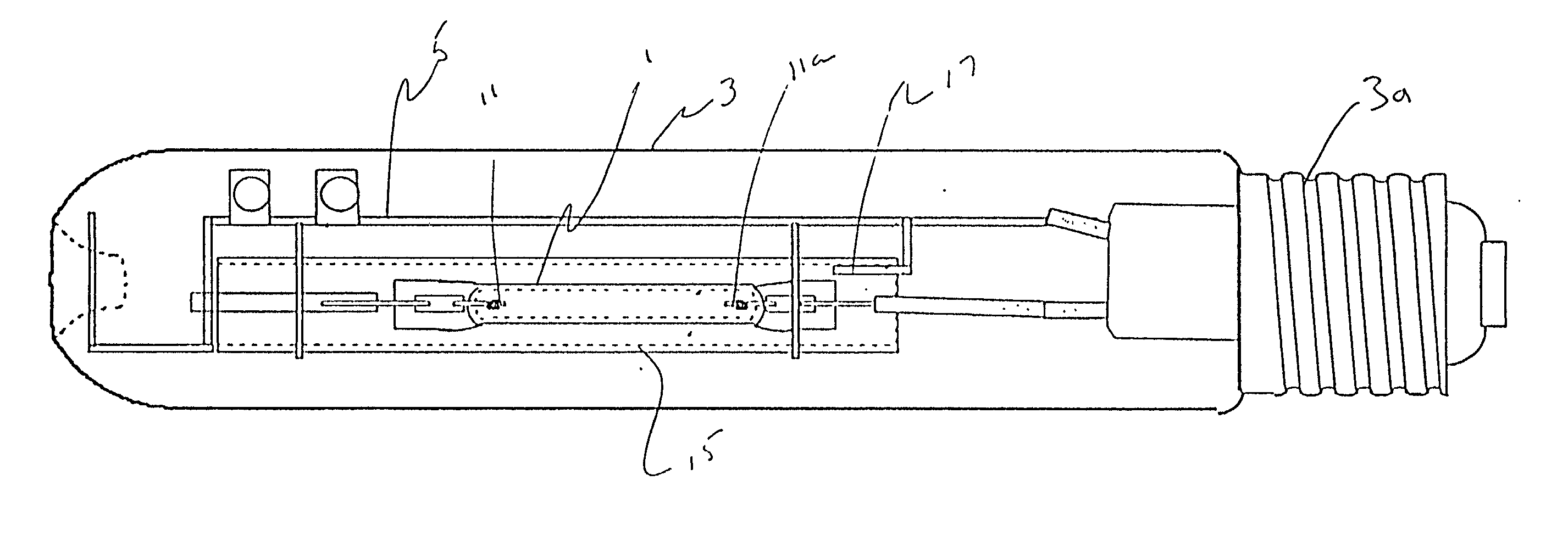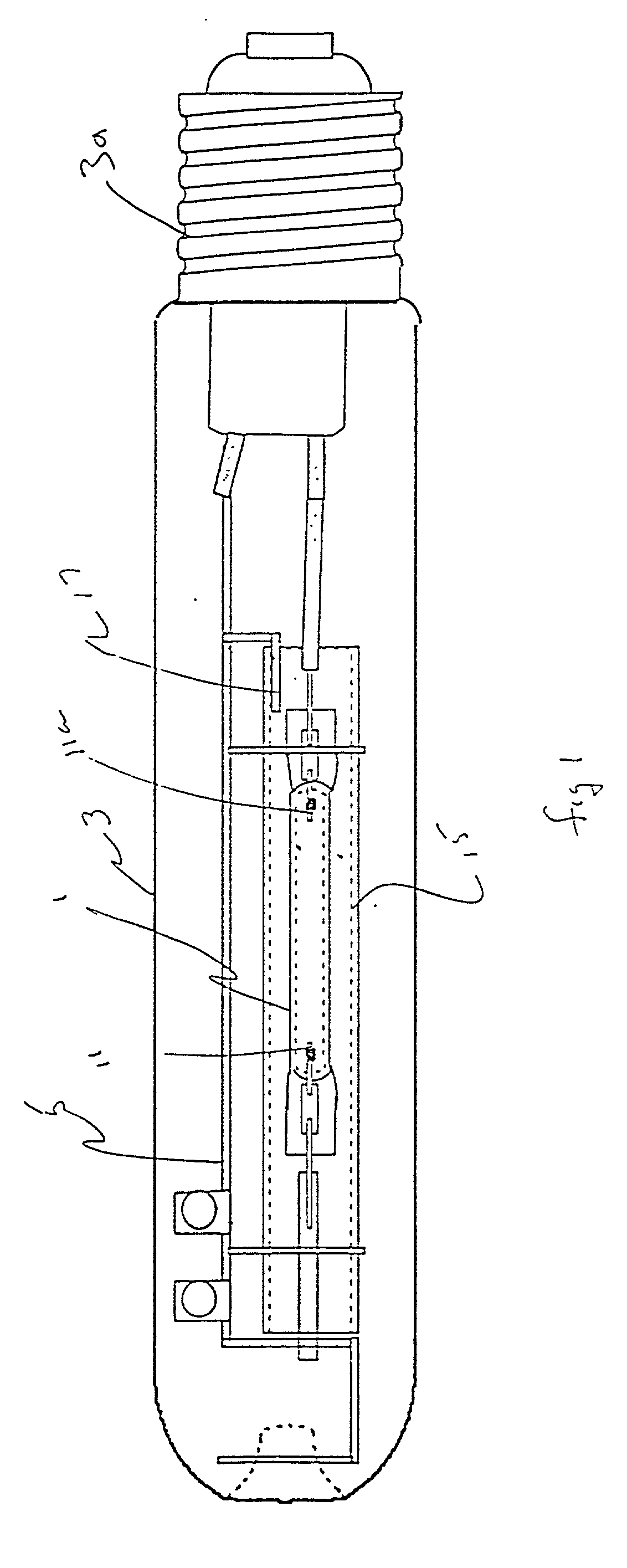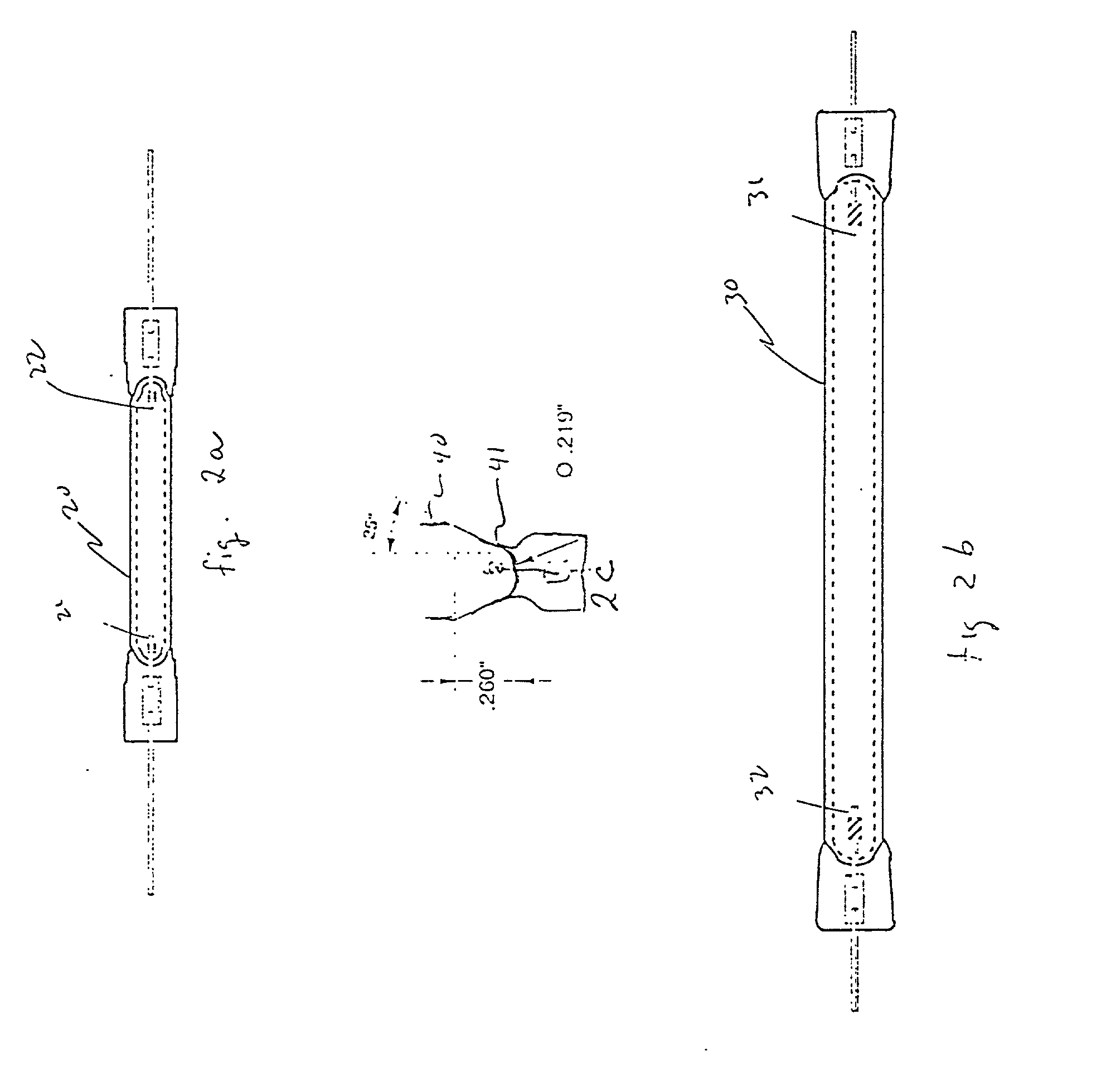Low mercury metal halide lamp
a metal halide lamp, low mercury technology, applied in the direction of gas-filled discharge tubes, generator control by field variation, solid cathodes, etc., can solve the problems of increased resistive losses in ballast and electrodes, difficulty in starting, and decreased efficacy
- Summary
- Abstract
- Description
- Claims
- Application Information
AI Technical Summary
Benefits of technology
Problems solved by technology
Method used
Image
Examples
Embodiment Construction
[0013] Referring to FIG. 1, we have found the geometry of the low-mercury metal halide design is critical to achieving performance equivalent to a standard metal halide lamp. An embodiment of a lamp is shown in FIG. 1. The lamp includes a 46 mm Nonex jacket 3 which is connected to a conventional base 3a. A 5.times.7 mm arc tube 1 is disposed within the jacket 3. Electrodes 11 and 11a are disposed within the arc tube 1 and are attached to molybdenum foil sections. A lead-in wire 9 is attached to the foil sections. One side of a power supply is connected to electrode 11 by means of a harness 5 which also holds the arc tube 1 in place within the jacket 3. The other side of the power supply is connected to electrode 11a by means of connector 17. A quartz shroud 15, 15.times.17 mm, is fitted around the arc tube 1 to increase the heat within the arc tube 1.
[0014] Shown in FIG. 2a is a view of a low-mercury arc tube to be operated in a 110-150 W range. FIG. 2a shows a quartz arc tube 20 wi...
PUM
 Login to View More
Login to View More Abstract
Description
Claims
Application Information
 Login to View More
Login to View More - R&D
- Intellectual Property
- Life Sciences
- Materials
- Tech Scout
- Unparalleled Data Quality
- Higher Quality Content
- 60% Fewer Hallucinations
Browse by: Latest US Patents, China's latest patents, Technical Efficacy Thesaurus, Application Domain, Technology Topic, Popular Technical Reports.
© 2025 PatSnap. All rights reserved.Legal|Privacy policy|Modern Slavery Act Transparency Statement|Sitemap|About US| Contact US: help@patsnap.com



